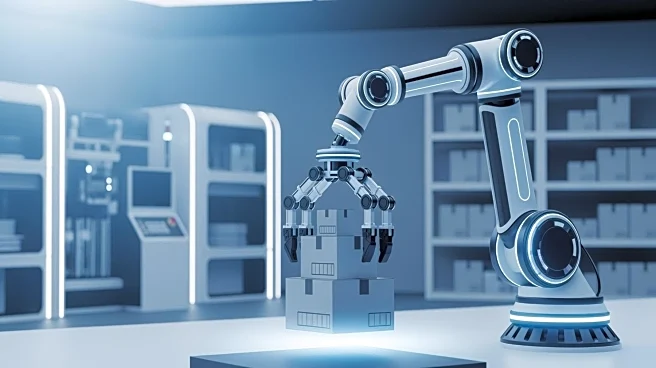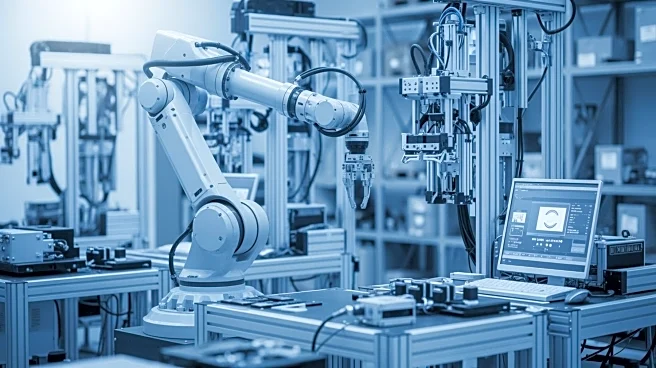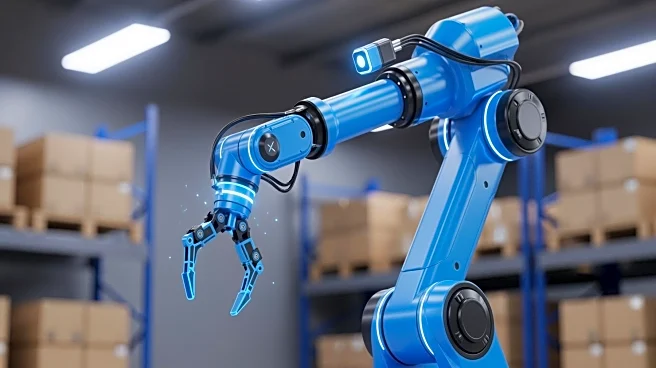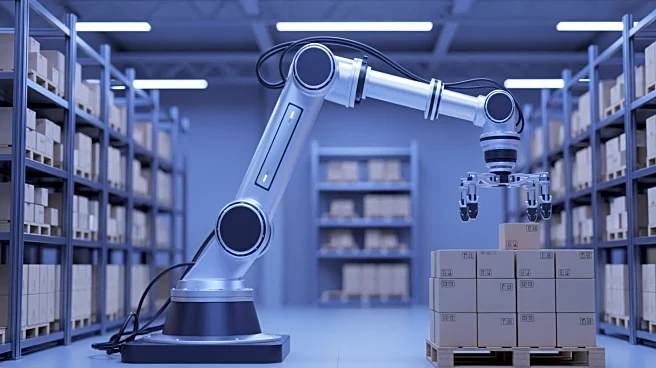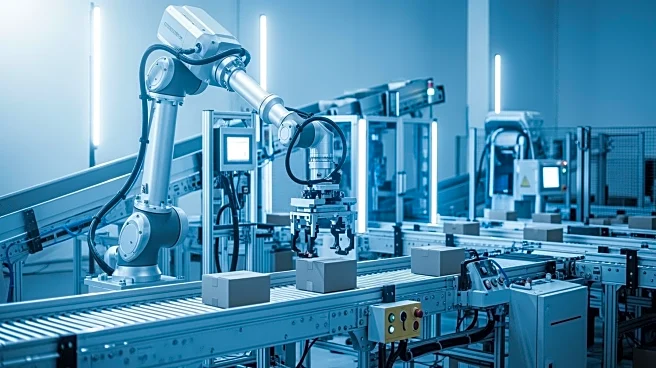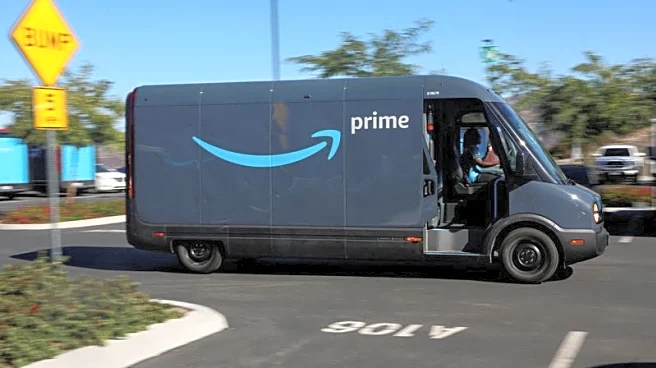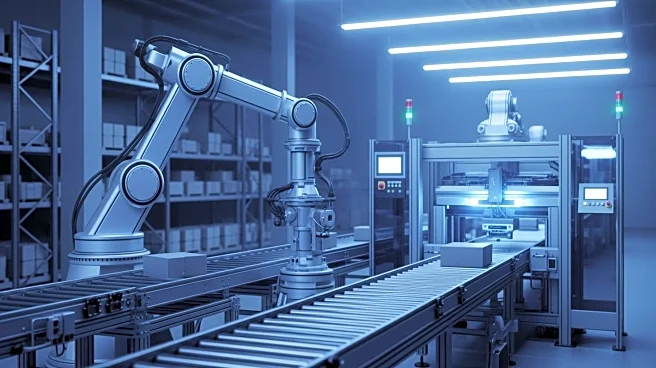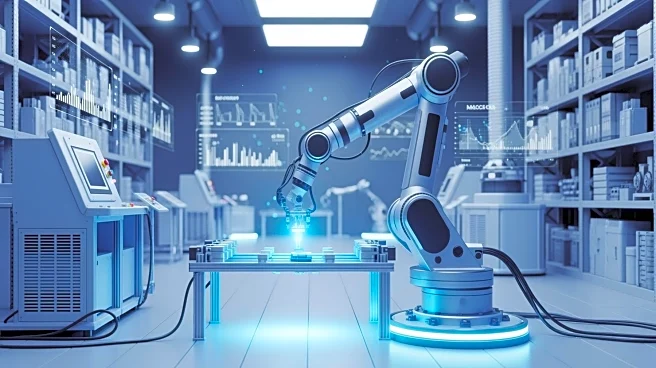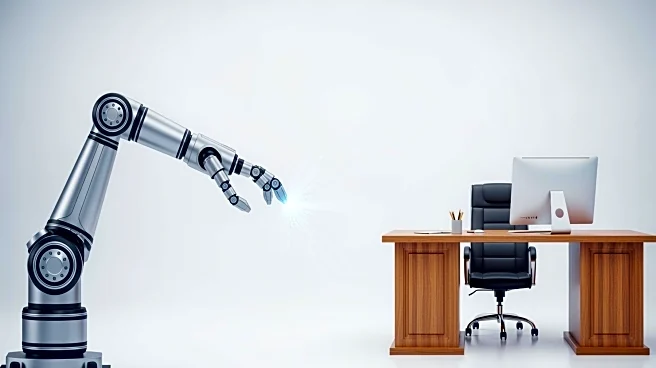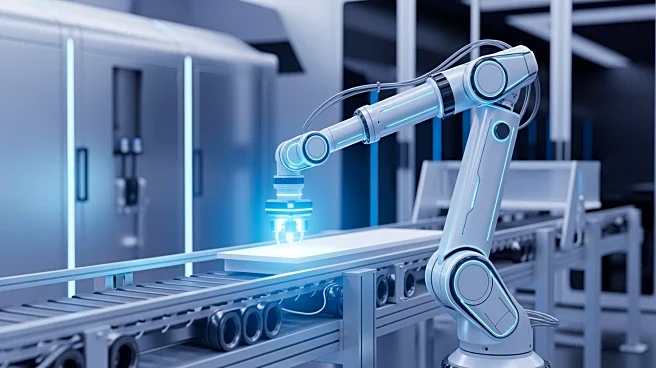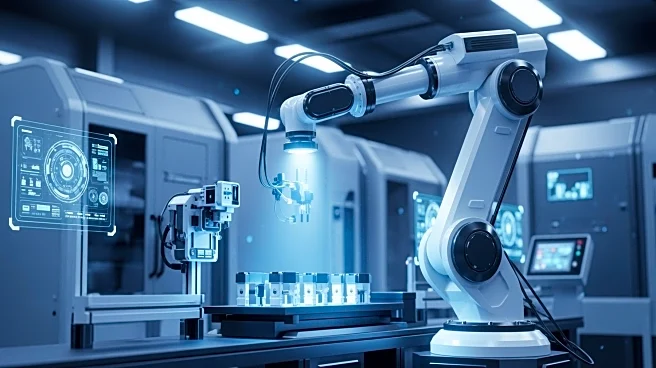What's Happening?
Amazon has unveiled new robotic technologies, including the Blue Jay robot and Project Eluna, aimed at enhancing efficiency in its warehouses. Blue Jay is designed to handle a significant portion of Amazon's
inventory, streamlining tasks that previously required multiple robotic stations. Project Eluna, an AI system, assists in optimizing sorting processes. These innovations are part of Amazon's broader strategy to reduce operational costs and improve delivery times. Despite concerns about job displacement, Amazon emphasizes its role in job creation, planning to hire 250,000 workers for the holiday season.
Why It's Important?
The introduction of advanced robotics by Amazon reflects a significant shift in the logistics and e-commerce sectors. While these technologies promise increased efficiency and reduced costs, they also raise concerns about potential job losses. Amazon's emphasis on job creation suggests a balancing act between automation and employment. The company's strategy could influence other businesses to adopt similar technologies, potentially reshaping the labor market. As Amazon continues to innovate, the impact on its workforce and the broader industry will be closely watched.
Beyond the Headlines
The deployment of robots like Blue Jay highlights the ethical and economic challenges of automation. As companies seek to optimize operations, the potential for job displacement becomes a critical issue. Amazon's approach to integrating technology with human labor could set a precedent for other industries. The long-term implications of such technological advancements may include shifts in workforce skills and the need for new training programs to accommodate changing job roles.
